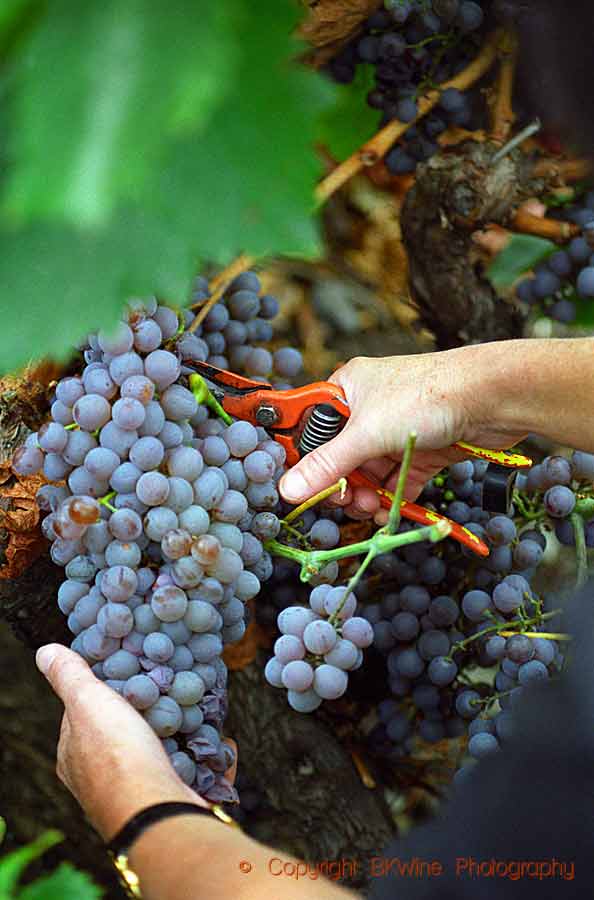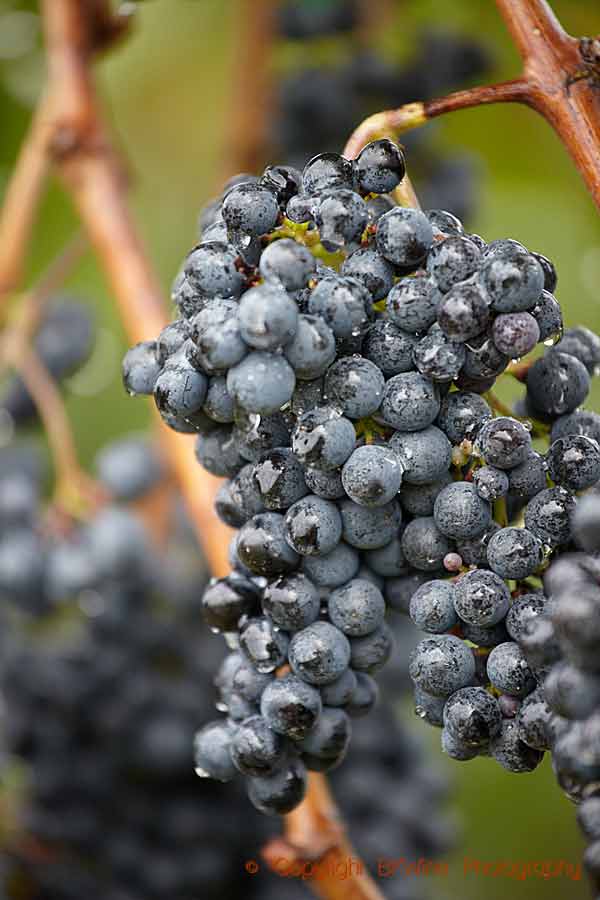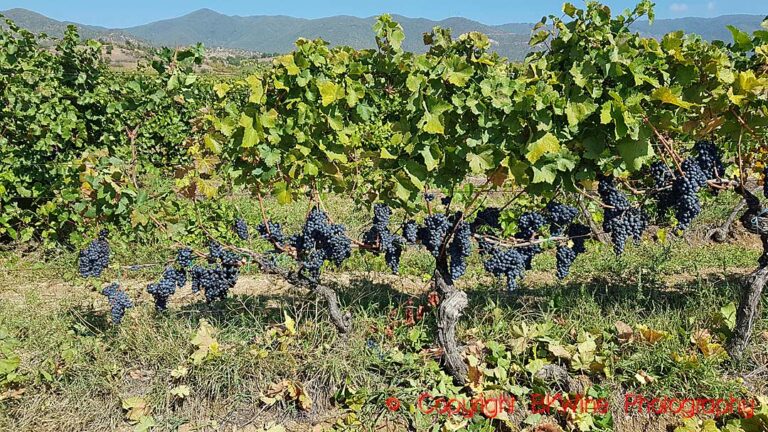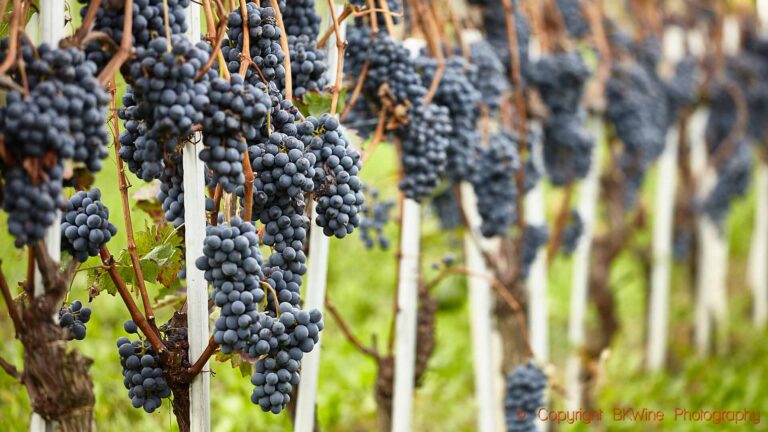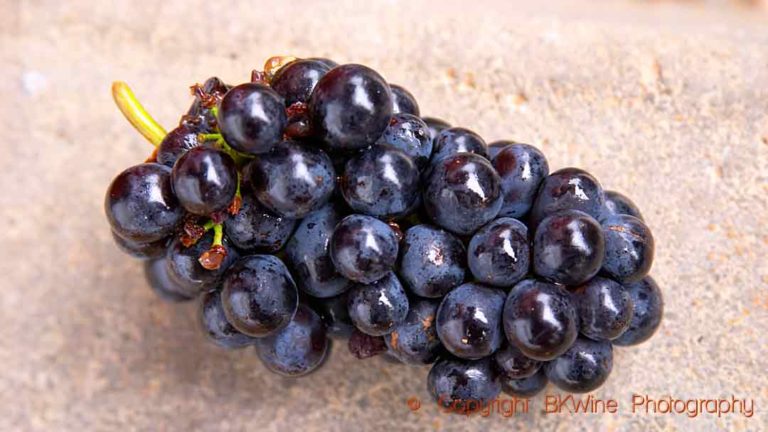Grenache was the first grape variety I ever harvested. It was in Banyuls in southern France, a beautiful vineyard by the Mediterranean Sea. Big bunches with ripe grapes. Maybe that is why I like it so much. It is a hard-working grape and quite discreet. It doesn’t boast its name on the label very often. That means that for some people, it is a somewhat anonymous grape. But actually, it is anything but. Here’s an introduction to this excellent grape variety.
Not very long ago, it was the most planted red grape variety in the world, surpassed only by a rather unknown white grape variety. But in 20 years, the plantings have gone down from 216,000 hectares to 150,000 ha. Grenache is now only the 5th most grown among the reds, after cabernet sauvignon, merlot, tempranillo and syrah. Hopefully, the downward trend will stop. Grenache is a perfect grape for hot and dry climates.
Although it is much planted globally, grenache hasn’t travelled widely, as most of the grenache vineyards are in France and Spain. It is an old variety that probably originated in Aragón in northern Spain; however, this is being challenged by Italian researchers, claiming that the grape’s origin is Sardinia.
This is a longer version of an article published on Forbes.com.
This is an article in our series of presentations of the world’s most popular and exciting grape varieties. Read other articles here:
Grenache characteristics
Grenache wines have an intense aromatic profile, with warm and ripe fruit, sometimes hints of dried fruit, and herbal and peppery notes. It has a smooth mouthfeel, usually with a good but modest amount of tannins. The grapes can accumulate a lot of sugar, and alcohol can sometimes be high. Sometimes it can be a good idea to attenuate the high alcohol by blending it with other varieties. It is sensitive to oxidisation, which means one has to handle it carefully, but that also contributes to its character.
In France, Spain and Italy
With 80,000 hectares, France is the largest grenache country. We find the grape along the entire French Mediterranean coast. It copes well with the heat, the drought and the strong winds. It is the dominant grape in most wines in the Languedoc, Roussillon, the southern Rhône, including Châteauneuf-du-Pape, and Provence. It is blended with mainly carignan, syrah, mourvèdre and cinsault.
Grenache is not a fashionable grape, although it has many admirers. It has been the hard-working champion of Southern France for a long time. But in the Languedoc, it has been overtaken by syrah, a newcomer in the region, as the most planted variety. Syrah gained ground to a large extent because it was promoted by the authorities as an “improvement variety” (cépage ameliorateur). Over the years, we have heard many producers in the Languedoc, and the southern Rhône Valley lament the fact that the grenache plantings are decreasing. Grenache is much more suited to the climate than syrah, they say.
Some producers in the Languedoc tend to use syrah as the main grape for their prestige wines. Maybe this is because syrah is more well-known among consumers. But luckily, grenache is now more and more appreciated by innovative producers all over the world. Many winemakers in southern France love grenache because they say it expresses the terroir of their region. Talented producers can produce surprisingly fresh and crisp grenache wines.
Spain is the second grenache country with around 60,000 hectares. Here, the grape is called garnacha. It is in third place among the red grapes, after tempranillo and bobal. It is planted all around the country. It adds aromas and intensity to tempranillo in Rioja, and it is one of the primary grapes for Priorat in Catalonia.
Grenache from Sardinia is well-known. Here is it called cannonau. Cannonau di Sardegna is a DOC covering the whole island. Some of the best cannonau wines come from the eastern parts, around the towns of Nuoro and Capo Ferrato.
Grenache in the USA and Australia
In California, Randall Grahm at Bonny Doon Vineyard, created a highly enthusiastic group called The Rhone Rangers in the 1980s, promoting the traditional Rhône Valley varieties. Grenache was already planted at the time but mostly used for low-quality wines. The Ranger movement promoted grenache and other Rhône Valley grapes as varieties worthy of being taken seriously. The grenache acreage has gone down over the last 20 years, but there is still an interest among growers who wants to stray away from the more mainstream chardonnay and cabernet. It is also having some success in Washington, Oregon and Texas.
In Australia, grenache was – maybe surprisingly – the most widely planted variety until the 1960s. It was mostly used for fortified wines, at the time often called “port”. Then it was outmanoeuvred entirely by shiraz (syrah) and cabernet sauvignon. But when interest increased for Rhône grapes worldwide, it made a comeback, and the GSM wines (a blend of grenache, syrah, and mourvèdre) became popular. Now, remaining 80-year-old bush vines are highly sought after. The growers harvest a little earlier, ferment whole bunches and get fresh, juicy wines.
Other countries have tiny plantings of grenache. It looks like the grape has a future, though, in, countries such as South Africa and Chile. We have tasted excellent examples in on our wine tours both in South Africa and in Chile.
Climate, soil, diseases
Grenache is often pruned as a freestanding bush vine (gobelet, alberello). The cordon royat pruning is also used. These two methods are called “spur pruning” and are the best for reducing grenache’s natural vigour. The colour drops rapidly when the yields increase. Grenache performs best if yields are kept low. Along the Mediterranean, where it is usually found, the poor soil and the drought naturally limit the vigour.
Another reason why a dry climate is ideal for grenache is that it is susceptible to fungus diseases such as mildiou and botrytis but has good resistance to oidium. In certain years it suffers from coulure during the flowering, a disease that causes some of the grapes on the bunch never to develop and ripen, which can drastically lower the yield.
Grenache can be found, through natural mutations, in two additional colours, white, grenache blanc, and “grey”, grenache gris, with pinkish grapes. Both make sometimes very interesting white wines, in particular grenache gris.
Grenache facts
Acreage world-wide: 150,000 hectares
Main countries where grenache is grown:
- France 80,000 ha
- Spain 60,000 ha
- Italy 5,000 ha
Grenache’s character: Grenache gives a wine with warm, ripe fruit and aromas of spices and fresh herbs. The grapes easily accumulate a lot of sugar. This will sometimes give a high alcohol but without impairing the balance. Sometimes quite smooth with modest tannins. Grenache is primarily used together with other grapes, but is often as the most important grape.
Travel
If you want to explore grenache’s character more in detail, you can do that in the vineyards, on a wine tour to Chile or one of the famous South Africa wine tours with BKWine. Or on a custom designed wine tour in France or Spain.
Travel to the world’s wine regions with the wine experts and the wine travel specialist.
Wine tours with more character. BKWine wine tours.


